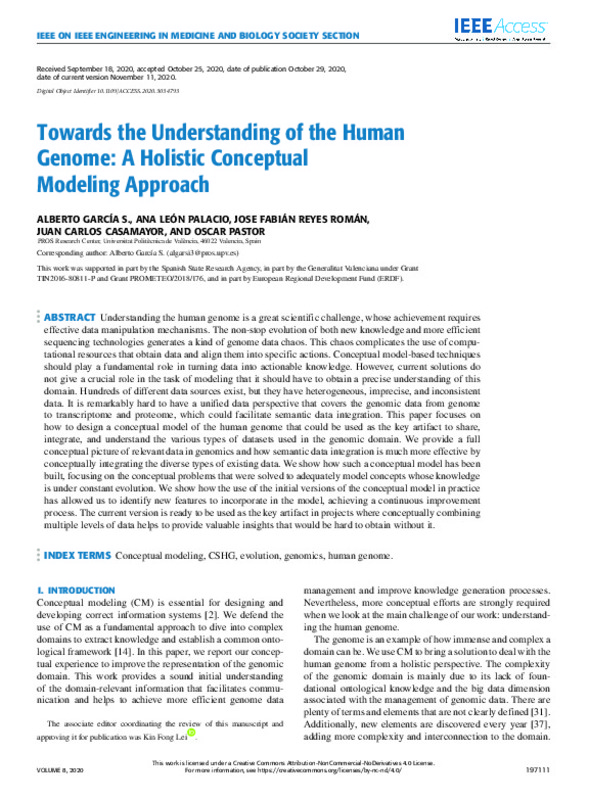JavaScript is disabled for your browser. Some features of this site may not work without it.
Buscar en RiuNet
Listar
Mi cuenta
Estadísticas
Ayuda RiuNet
Admin. UPV
Towards the Understanding of the Human Genome: A Holistic Conceptual Modeling Approach
Mostrar el registro completo del ítem
García-Simón, A.; León-Palacio, A.; Reyes Román, JF.; Casamayor Rodenas, JC.; Pastor López, O. (2020). Towards the Understanding of the Human Genome: A Holistic Conceptual Modeling Approach. IEEE Access. 8:197111-197123. https://doi.org/10.1109/ACCESS.2020.3034793
Por favor, use este identificador para citar o enlazar este ítem: http://hdl.handle.net/10251/168683
Ficheros en el ítem
Metadatos del ítem
| Título: | Towards the Understanding of the Human Genome: A Holistic Conceptual Modeling Approach | |
| Autor: | ||
| Entidad UPV: |
|
|
| Fecha difusión: |
|
|
| Resumen: |
[EN] Understanding the human genome is a great scientific challenge, whose achievement requires effective data manipulation mechanisms. The non-stop evolution of both new knowledge and more efficient sequencing technologies ...[+]
|
|
| Palabras clave: |
|
|
| Derechos de uso: | Reconocimiento - No comercial - Sin obra derivada (by-nc-nd) | |
| Fuente: |
|
|
| DOI: |
|
|
| Editorial: |
|
|
| Versión del editor: | https://doi.org/10.1109/ACCESS.2020.3034793 | |
| Código del Proyecto: |
|
|
| Agradecimientos: |
This work was supported in part by the Spanish State Research Agency, in part by the Generalitat Valenciana under Grant TIN2016-80811-P and Grant PROMETEO/2018/176, and in part by European Regional Development Fund (ERDF).[+]
|
|
| Tipo: |
|









